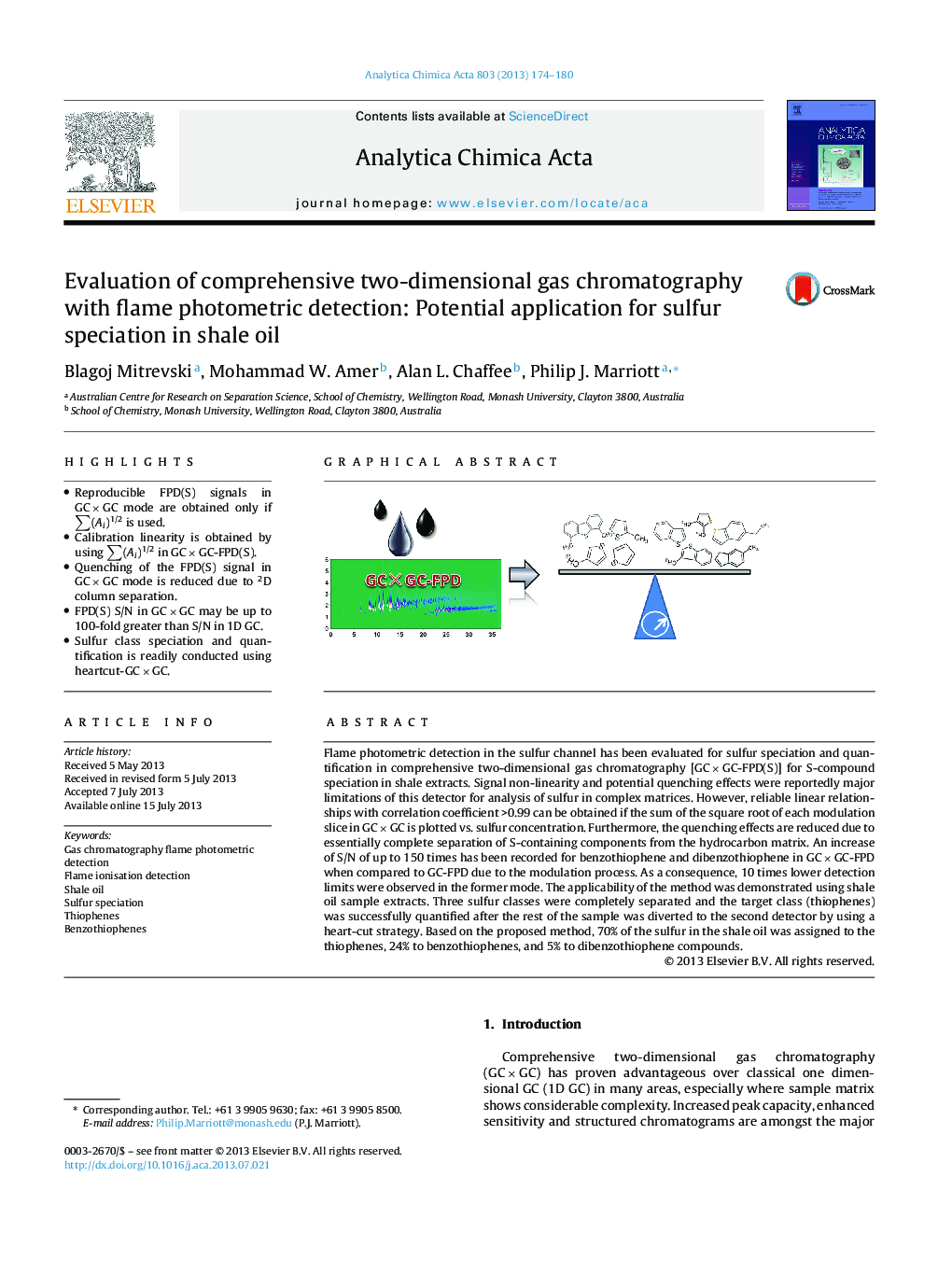| کد مقاله | کد نشریه | سال انتشار | مقاله انگلیسی | نسخه تمام متن |
|---|---|---|---|---|
| 1164351 | 1491029 | 2013 | 7 صفحه PDF | دانلود رایگان |

• Reproducible FPD(S) signals in GC × GC mode are obtained only if ∑(Ai)1/2 is used.
• Calibration linearity is obtained by using ∑(Ai)1/2 in GC × GC-FPD(S).
• Quenching of the FPD(S) signal in GC × GC mode is reduced due to 2D column separation.
• FPD(S) S/N in GC × GC may be up to 100-fold greater than S/N in 1D GC.
• Sulfur class speciation and quantification is readily conducted using heartcut-GC × GC.
Flame photometric detection in the sulfur channel has been evaluated for sulfur speciation and quantification in comprehensive two-dimensional gas chromatography [GC × GC-FPD(S)] for S-compound speciation in shale extracts. Signal non-linearity and potential quenching effects were reportedly major limitations of this detector for analysis of sulfur in complex matrices. However, reliable linear relationships with correlation coefficient >0.99 can be obtained if the sum of the square root of each modulation slice in GC × GC is plotted vs. sulfur concentration. Furthermore, the quenching effects are reduced due to essentially complete separation of S-containing components from the hydrocarbon matrix. An increase of S/N of up to 150 times has been recorded for benzothiophene and dibenzothiophene in GC × GC-FPD when compared to GC-FPD due to the modulation process. As a consequence, 10 times lower detection limits were observed in the former mode. The applicability of the method was demonstrated using shale oil sample extracts. Three sulfur classes were completely separated and the target class (thiophenes) was successfully quantified after the rest of the sample was diverted to the second detector by using a heart-cut strategy. Based on the proposed method, 70% of the sulfur in the shale oil was assigned to the thiophenes, 24% to benzothiophenes, and 5% to dibenzothiophene compounds.
Figure optionsDownload as PowerPoint slide
Journal: Analytica Chimica Acta - Volume 803, 25 November 2013, Pages 174–180